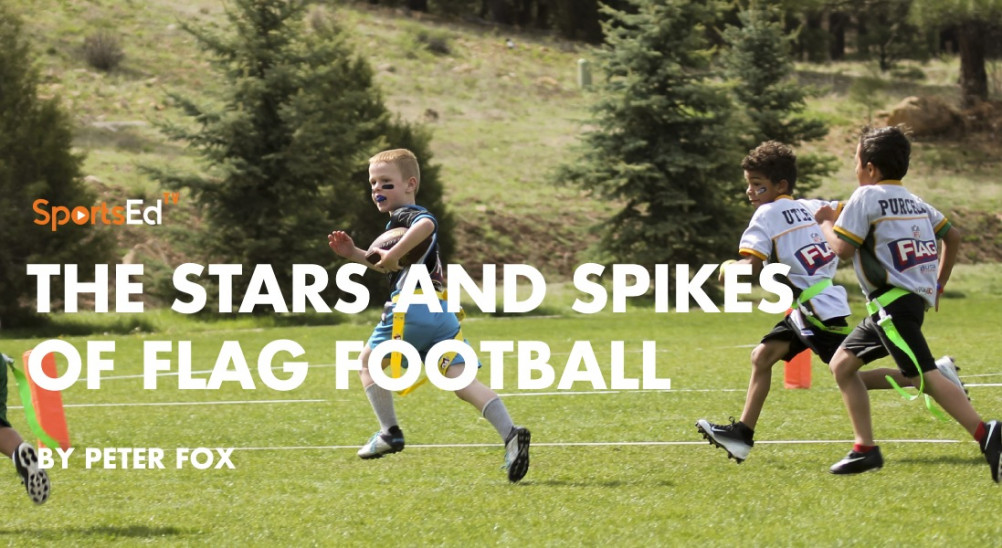Golf
Welcome and thanks for visiting...

Golf Is A Ball!

SportsEdTV Golf is committed to bringing athletes, coaches, and parents pro-level Golf education videos for FREE. All levels, anywhere, anytime. Check out our full instructional library and sign up to join our Golf community. In this beginner's guide, Peter Fox discusses what you need to know to get started.
"Golf is a ball!"
That's a greeting familiar to members of the golfing community. It's a greeting filled with subtle romance and goodwill.
Golf is a society built on friendships, integrity, and sport in places where the nature of its players and its venues are on vibrant display.
Golf is fun. It’s a game. It is enjoyable at any level of play. Golf is for everyone. Golfers are passionate. It won’t take you long to understand why.
There is a fifth-dimensional thrill that all golfers enjoy when the middle of the golfing bat squarely meets the middle of the golf ball.
The ensuing airborne parabola is a poem in flight. Every golfer's authors are many. Those golf pleasures are narcotic in a way.
How else can you explain a game that has a literature of its own?
Between George Carnegie's 1833 edition of Gofiana and Tiger Woods' 21st Century How I Play Golf, more than 5,000 works and millions of pages of songs, musings, and tributes to golf oozed from pens of golf smitten wordsmiths.
Romance and passion? In a game?
How can you not fall in love with freshly mown grass in your nostrils?
Or private hours with your best friends?
How can your heart not fill with joy while golf empties your head of life’s daily rigors?
Golfers share a special love for each other, although they enjoy the game for different reasons.
Gamers love to compete. Thinkers love the process. Athletes love the power and the grace. Socials love friendships.
There’s no right or wrong way to measure how you can love golf.
There are rules. There are customs. There are boundaries. There is etiquette.
They're sort of like traffic signals; they help the flow of the game, and whether you're in a truck, a sedan, or on a bike, they all pretty much apply to make every experience better.
They serve the order of the game, and it is golf's orderly and pastoral unfolding that seduces. That’s just the nature of golf. How you nurture your game is up to you.
Above all, we hope that you come to think of yourself as a golfer.
There are many ways, many philosophies, many methods, and nuances to golf.
People new to golf run the risk of dousing the golf spark by suffocating it with a glut of unaligned information.
We don’t want that to happen to you. We want you to love golf the way we do.
We want you to have quick and early success.
And after all this time, we only know one way to do that.
Learn the fundamentals.
This learning is about loving the golf process, so let’s get on with playing golf.
By now, you pretty much get the picture that golf is a game that is more than whacking the ball and chasing it.
Now, this is an exercise I suggest to every new golf player.
Find a golfer who’d be willing to walk around the golfing grounds with you. Not to play, just looking and learning.

Just you, your eager mind, and your golfing mentor.
For example, let's pretend to watch a pair heading toward the 18th hole because it's right near the clubhouse where the sometimes-notorious 19th hole is euphemistically located.
The 19th hole is a nickname for the after-golf watering hole—pub, bar, eatery, etc. where golfers gather and act like fishermen, telling tales to themselves. It’s all very convivial.
Here they are at the 18th hole. Most golf courses are 9 or 18 holes, and that golf tradition seems older than the dirt itself.
By the way, dawn or dusk is a good time to take this walk along the golfing grounds. Nature’s portrait is at its best, then.
It will usually be populated sparsely then, if at all. Depending on the venue, the wildlife that invariably peeps at golfers from protected lairs may accompany you.
So, what have we here?
Well, it's the green—that place where the grass is mown smooth like a pool table and the pocket where the ball goes is a hole in the ground made with a special tool.

Then, the greenkeeper inserts a liner called a cup into the hole that holds a stick onto which a flag is attached.
Golf is a target game, and that’s the target. The stick and the flag help you see where the target is from far away.
Usually, the hole is moved each day because the grass around it is so sensitive that it can only endure a day or so of foot traffic that collects inevitably around the target hole.
When players’ balls come to rest on the closely mown green area, they usually remove the stick and flag because they are close enough to see it and because if they are playing the game under the auspices of the rules of golf it is a requirement.
By the time you venture onto the golf course, many of your questions about the rules of play will be answered by your golfing mentors.
Your responsibility is to ask what to do when you identify a situation that represents an unknown to you.
The mentors want to answer, but often, they have played golf so long that the answers are buried deep in their subconscious because they've become a habit, and they don't actively think about them any longer.
So, anyway, then the players putt, usually the farthest away from the target putting first. The player has the option of continuing to putt until the ball falls into the cup or yielding play to a subsequent player whose ball now rests farthest from the target.
Choosing to continue or yield is often influenced by the situation or location.
For instance, if the putt went dramatically astray but not farthest away, the putting player may want to recalculate the topography or spend a moment rehearsing a putting image. So, in that circumstance, yielding might be in order.
Another time you might choose not to putt even though you have the option to continue is when your feet might stand on the likely path of a playing companion's upcoming putt.
That delicate grass and ground will indent under your weight and might cause a rolling ball to bounce awry. So, it is good golf manners to walk around that path and put a coin or otherwise flat object immediately behind your ball.

T
hen you can pick up your ball and let the putting continue. When it's your time again, just put your ball in immediately in front of the marker and putt......and listen to the golf music.....
At some levels it's ecstasy!
Before we leave the green let’s talk about some more golf manners. Easy stuff that makes the experience more enjoyable.
For instance:
“First in gets the pin.” The pin is another word for the stick and flag. So, if your putt goes in first, it’s your job to pick it up and put it back in the hole before your group leaves the green.
And speaking of leaving the green, it is always a good idea to leave your golf bag or trolley or extra clubs between the back of the green and route to the next teeing ground.
We'll get to the goings-on at and about the teeing ground when our golf course walk gets there. Right now, there are a couple more green courtesy items you should know about.
That delicate putting surface usually gets dented when a high-flying ball from a distance away lands on it.
Those dents will kill the grass unless they are repaired, promptly and the hollow will bump putts off their intended path.
If you want to impress your more experienced golfing companions when you are on the putting surface, fix a ball mark that isn't yours.
Other courtesies golfers extend to each other by being aware of the sensitivity of the putting grasses include:
Wearing golf shoes without metal spikes. They make for smoother surfaces, overall, but even the spikeless shoes will scuff the grass when players walk or cavort carelessly.
Now, before we go walking down the fairway, let’s take a look at a greenside accessory. Most but not every golf green will be accessorized by one or more nearby sand bunkers. Some people call them sand traps; golfers call them bunkers.

They are architectural devices, a part of the designer's license to intrigue you.
Sometimes they are good--put there to keep your ball from bouncing into something more golf-hazardous—like a pond or a brook.
Sometimes, they’re a pain--put there to keep you from rolling the ball onto the green.
There's a protocol for playing golf from sand bunkers as you would expect. Like the rest of the game, it's comprised of a combination of rules, customs, and courtesy.
Some people think the rule that says golfers are not supposed to touch the sand with their golf club before they hit the shot is silly.
Others contend that touching the sand with the club allows the golfer to test the sand’s texture and diminishes one of golf’s entertaining tests.
It’s that sand texture that changes from day to day, region to region, course to course, and even bunker to bunker that makes sand bunker golf fun to figure out.
It's also that changing sand texture that will cause surprising shot results occasionally, and commands, as a safety courtesy, that golfers make sure their playing companions are aware they are about to swing.
Then, of course, the footprint trail you make walking in the sand bunker and the marks from your swing need to be neatly raked so the next person whose ball finds its way there is not impeded by your little mess.
Usually, the golf course will place one or more rakes in or near the bunker. Take note of which—in or near because that golfing community has decided that is where they want you to return the rake when you are finished using it.
One final sand bunker hint that will save you an embarrassing moment.
Walk into the bunker from the lowest, closest entry point near where your ball is.
Almost every greenside sand bunker has a high point and a low point. The sand around the high point is usually very soft and deep.
The first time you forget, you’ll sink in the sand over your ankles and are apt to stumble. So be careful. Enter from the low point.
Oh, yes, there are other sand bunkers out there alongside the fairway. Handle them the same way, and you’ll be fine.
You might find that most of them are not as deep as the greenside sand bunkers.
They, too, are designer directional tools and sometimes optical trickery—all part of the fun.
Just when you think you can stick your tongue out at one, the wind will change and suck your shot right into a bunker.
Let’s get rolling. Here we go, away from the putting area toward the teeing ground into the big wide expanse the golf purists call “through the green”.
"Through the green" is any part of the golf course that is not a putting green, teeing ground, or a bunker or water hazard.
So that area can include the bushes, wooded areas, longer grasses known popularly as "the rough," and the closely mown field area that is the object of every golfer's lust---the fairway.
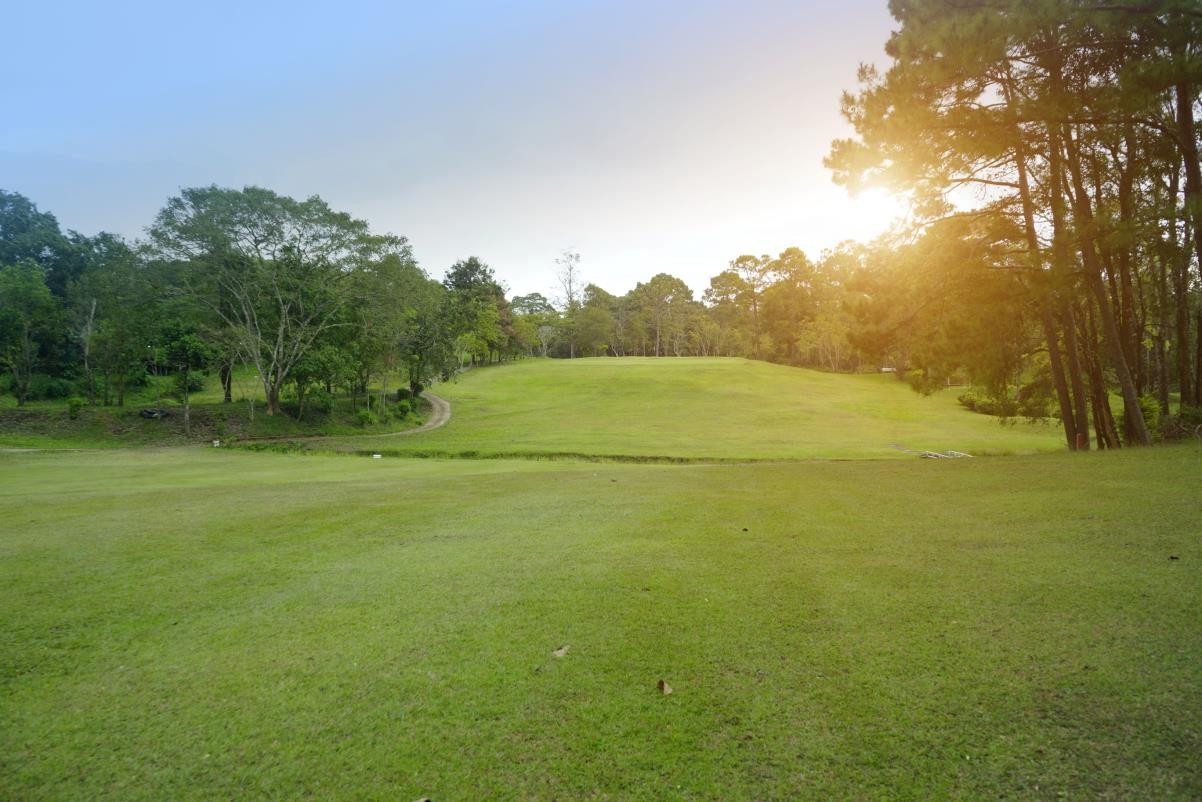
Precise, scalpel-like approach shots from the fairway toward the green and long high flying tee shots onto the fairway are on every golfer's dream list.
Those dreams come true for every golfer. Golf’s engagement is to have them come true frequently and consistently.
It’s out here in the fairway where golf’s variables accumulate. Fairways are as unique as fingerprints.
Length, width, uphill, downhill, sidehill, soft, firm, sandy, muddy, thinly, or thickly grassed, forests as boundaries, lakes as boundaries, buildings and homes as boundaries, windswept, wind-sheltered, rock freckled and wall enclosed, railroad divided, oceanside, cliffside. If Mother Nature made it, golfers likely play on, over, or by it.
The minutiae that captivate golfers and influence their play is never as obvious as it is in the fairways.
Golfing shots may have similarities, but few are copies.
Out here—through the green—like on the putting surface, the player furthest from the objective plays first.
Out here—like on the putting surface—some turf repair is your responsibility.
Divots, those chunks of dirt and grass your golf club dislodges, should be retrieved and replaced. This is how.
In some regions, fairway turf is not as tightly knit as other divots will shatter into small pieces.
In those areas, the course will be made available and mixed with seed and fertilizer so you can fix the divot spot.
Golf has become very popular, and that means more players are on the golf course.
Just like the turnpike is filled with more cars, the time it takes for point-to-point progress is an issue.
If you want to get under an experienced golfer’s skin, dilly-dally needlessly on his golfing path.
You will find as you begin to become successful that judging distances is one of the fine arts of golf.
It used to be a highly honed skill. Today, because of the traffic, most golf course operators will give you yardage information.
It’s a compromise aimed at helping all golfers progress smoothly along their route.
On many courses, stakes are placed to represent 150 yards to the center of the green.

Even more precise information is marked on these watering system metal plates.
Sometimes, even before you begin to play, the course management will have a scheme that will allow you to know in advance where on the putting green the flagstick is located.
Often, different colored flags are location indicators. Sometimes, there’s an actual map that’s available before you begin.
That, too, is information that hopefully will reduce delays when the course is crowded.
You will find out that golf is a game of rhythm, ebbs, flows, and tempo and is wonderful when it progresses smoothly.
As a beginner, your pace of play will surely be affected by your skills.
This subject alone is where many new to our game have difficulty in being on the golf course—in the flow of play.
There are a few solutions.
Begin with this knowledge. Golfers love golfers. All golfers had to learn like you. Without new players like you, some courses would have to close, or the costs of playing them would skyrocket.
So, first and foremost. Welcome to the golf course.
Now that you are here and while you are learning, do these few things, and playing in the traffic will be okay.
First, forget the scorecard and enjoy the process. Play with golf balls you can afford to lose.
Move along briskly. If you strike the ball poorly, pick it up and move it to the place where you wished it had gone.
There will be plenty of time to play by the rules when you begin to call yourself a golfer.
Nothing is embarrassing about training wheels or safety nets. Long before the concerto, there were plenty of chopsticks being played.
Here’s another way to deal with new golfer jitters when there are a lot of experienced golfers around.
Go on the golf course when it is not as crowded. Often, that is late in the day. Often, it’s too late for the “regulars” to play 9 or 18 holes.
It’s a perfect time to solo.
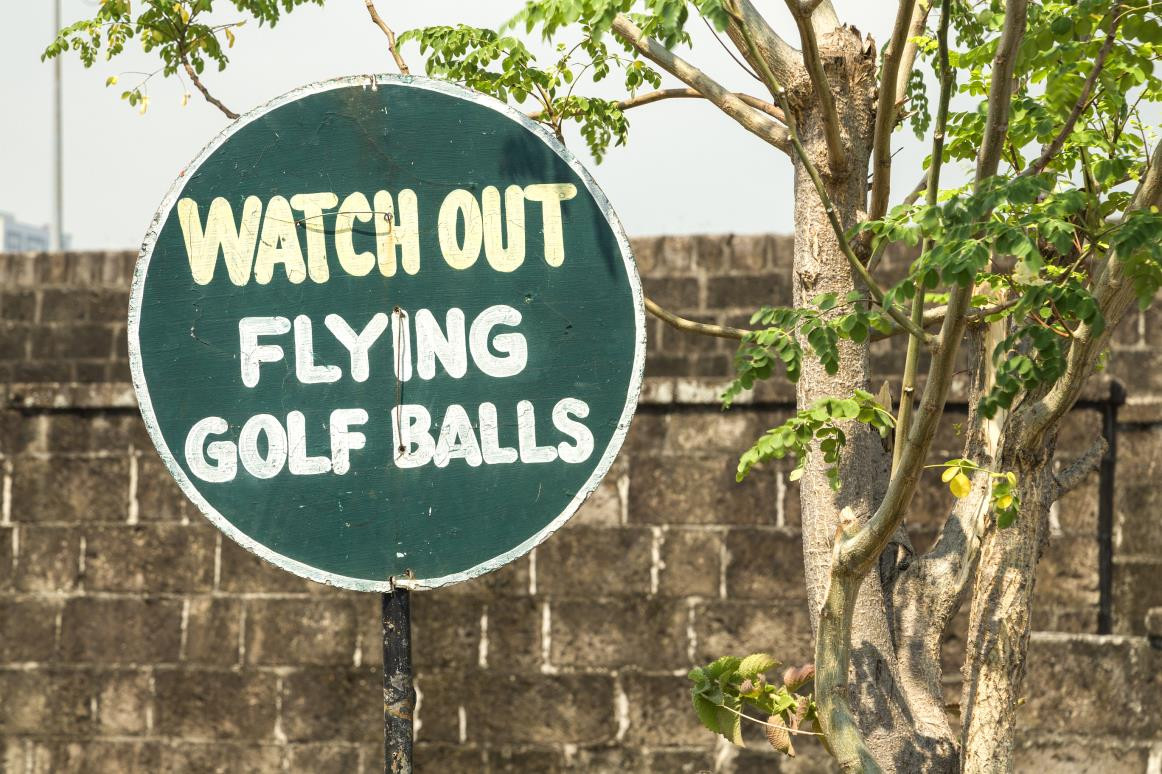
Those short private hours, with or without your mentor, will be invaluable. It’s a time to experiment.
Take chances. Learn your limits.
It's a time you'll remember like your first infatuation.
It's a retreat that accomplished players will revisit. If one happens along and is playing at a faster pace than you, invite them to "play through" or pass you.
Some will, some won’t, but inviting faster players or groups to pass you is your “I’m a real golfer” badge.
A beginner will do the same for you someday.
The retreat hours. A perfect time to fall in love with golf.
But, now, let’s go to the tee box. Right or wrong, it’s where many golfers say they get their biggest thrills.
It's also where some of the funniest sites in the game can be seen as even the most experienced golfers succumb to the urge to propel the ball as far as their strength will allow.
There is something addictive about tee shots flying high, long, and straight that is golf's version of heaven.
Making that occur is someone else’s subject. This one is when and why.
When golfers are scoring, the order of play is determined by “the honor” system.
Newbies mistakenly call it “honors” but having the honor to play first from the tee accrues to the player or team who had the lowest score on the previous hole.
On the first hole, "honor" is chosen by a flip of a coin or another random fairway.
In casual play, a process called "ready golf" is usually in effect. That is, the first player deemed ready to play can do just that in the spirit of continuing a smooth pace of play.
Ready golf on the tee is easy. On the fairway, safety issues come into play, and good judgments should be exercised.
Virtually every golf course is designed with several teeing areas.
Essentially, they are built for players of varying skill and strength and are an attempt to equalize the distance factor in the tee shot.
Often, this is how they might be selected.
Expert or professional players might choose the tees farthest from the green.
Average golfers play from the center tees and less accomplished or golfers with less strength should elect to play from the forward tees, closest to the green.
Honest self-appraisal in tee selection will make your golf more enjoyable.
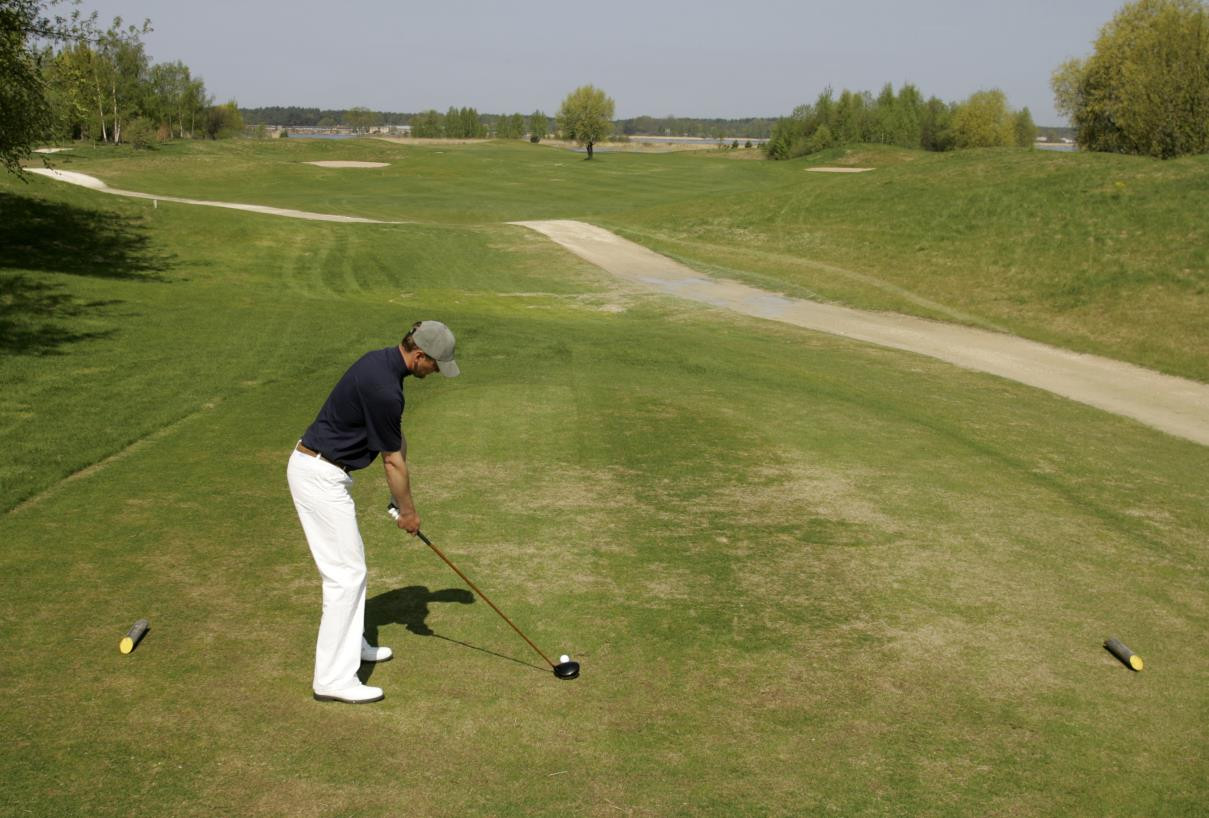
T
ee markers—usually color-coded—show the player the specific area on the teeing ground that golf administrators have chosen.
Like the flagstick is moved on the green to allow the grass to heal from traffic, the tees get moved daily too for pretty much the same reason.
Tee movements are also part of how the character of the course changes daily and is one of golf's interesting variables.
The "approved" ground for teeing the golf ball is an imaginary box, the leading edge of which is a line between the markers. The box extends backward and is two golf club lengths long.
You can stand outside the box, but keep the ball in it.
Before we move along, we should talk about the last big golf custom that new golfers need to be explained.
It has to do with noise on the golf course. To outsiders, it might look silly.
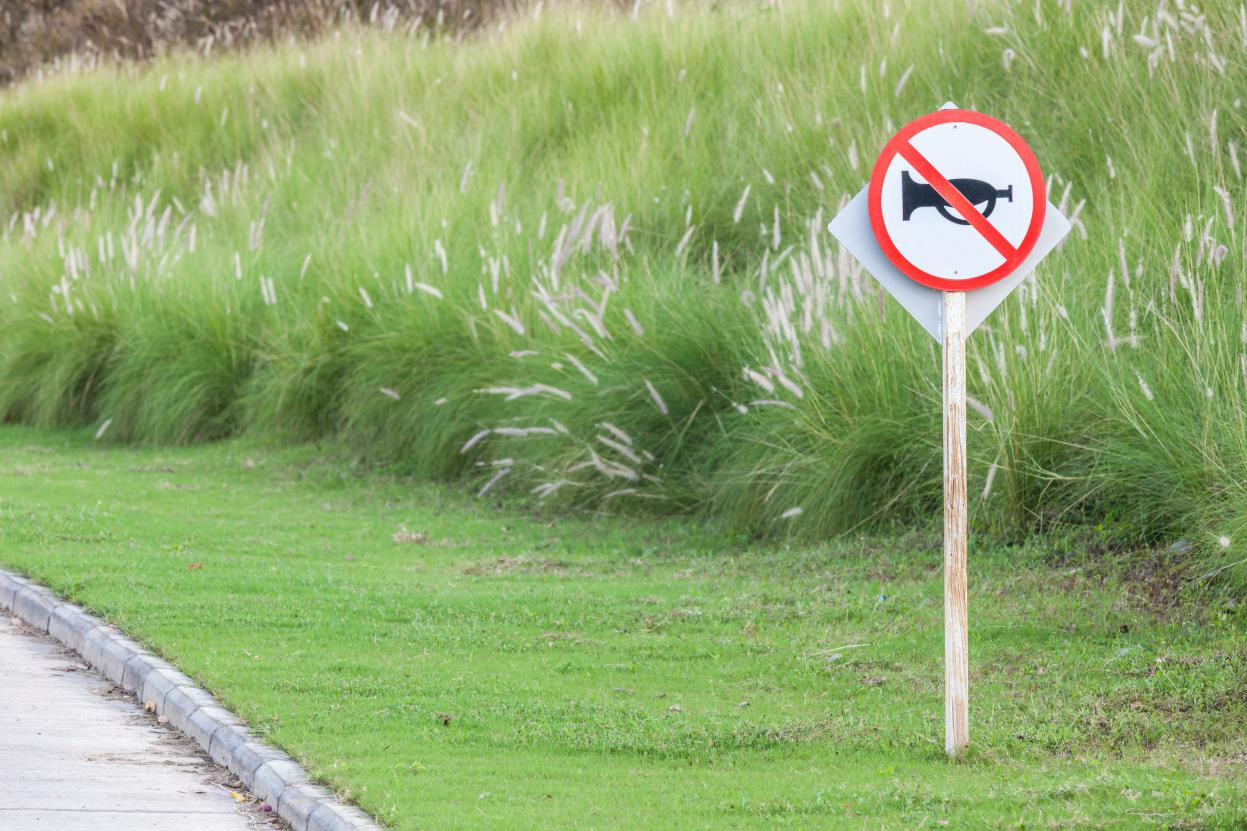
I
In other sports, fans are screaming, cowbells, clanging, and feet are stomping while the athletes are performing perfectly, and it doesn’t bother them.
In many cases, the noise motivates them to perform better. The foul shot in basketball is a perfect example of what we mean.
But in golf, noise distracts and destroys...and a lot of folks don’t understand why. It is the predictability factor.
That foul-shooting basketball player fully expects pom-poms to be waving and feet to be stomping while he strokes the ball toward the hoop.
That foul-shooting player would be just as equally distracted if the crowd was quiet, and just at the instant of release, an unexpected air horn blasted.
A pop bottle accidentally smashing in the bowling alley might cause a guttural response.
And so, on the golf course, where nature’s tranquil ways are a big part of the culture, unexpected sound is a big distraction.
Birds chirp. Wind whistle. Brooks babble. That’s expected and isn’t a bother.
When people babble—unexpectedly—that is a bother to many golfers and it's why the etiquette of the game is stringent about unpredictable noise.
If you can avoid making it while others are attending to their golf shot, you will make many friends.
What kinds of noise?
That’s a good one!
Clinking clubs together. Beepers. Cell phones. Squeaky golf cart brakes. The ripping sound of golf glove Velcro. Chit chat. Bouncing balls. Squirting aerosols. Footsteps.
The key is awareness. Noise travels—especially over water-- and players on other holes can be distracted, too.
Your sounds might be inevitable. You gotta sneeze you gotta sneeze!
Making an effort to manage the timing of the sounds builds sure golfing respect.
The distraction factor is all about when and whether or not the sound was expected.
The same can apply for sudden movements, so try and stand where you are out of other player’s fringe vision while they are making their shot.
We knew one scurrilous gambler who used the sun as a co-conspirator.
He'd use his shadow to distract and even went so far as to polish his putter to a mirror-like sheen and would flash it in his opponent's face at critical times.
Needless to say, his tactics hastened his shunning.
The golf experience is special. It has its own culture superstitions and peculiar ways.
Just like hopscotch, flag football, and dancing, there are certain behaviors unique to each culture that may not make sense to a casual observer but are honored by those who choose to entertain themselves that way.
People who want to play golf figure out early on that the customs, manners, and rules are part of its charm.
One of the charms is golf's constant evolution. Rules change. Customs change. Once you're a golfer being aware of change is part of the attraction.
Today, the wind may be your partner. Tomorrow, it could be your opponent.
We're on a par three hole now. Isn't it beautiful? It's shorter than most which is why "par" is three strokes.
The concept of par is often mistaken.
Par on a golf hole is the number of strokes an “expert” player would usually score on it. Beginners aren’t experts, so their concept of PAR can be creative.
We know one who has not begun to count strokes yet, but keeps track of minutes. Eight minutes is her par goal.
Set your personal par.
Though many golfers enjoy walking, the motorized golf car has become part of the culture.
Its benefits, economic and otherwise, have changed golf.
Some courses even require that they be used. Again, it is usually the speed of play and revenue that influence those requirements.
In any event, they are here to stay and have their courtesies.
It’s a good general rule to drive them on ground that is not the fairway.
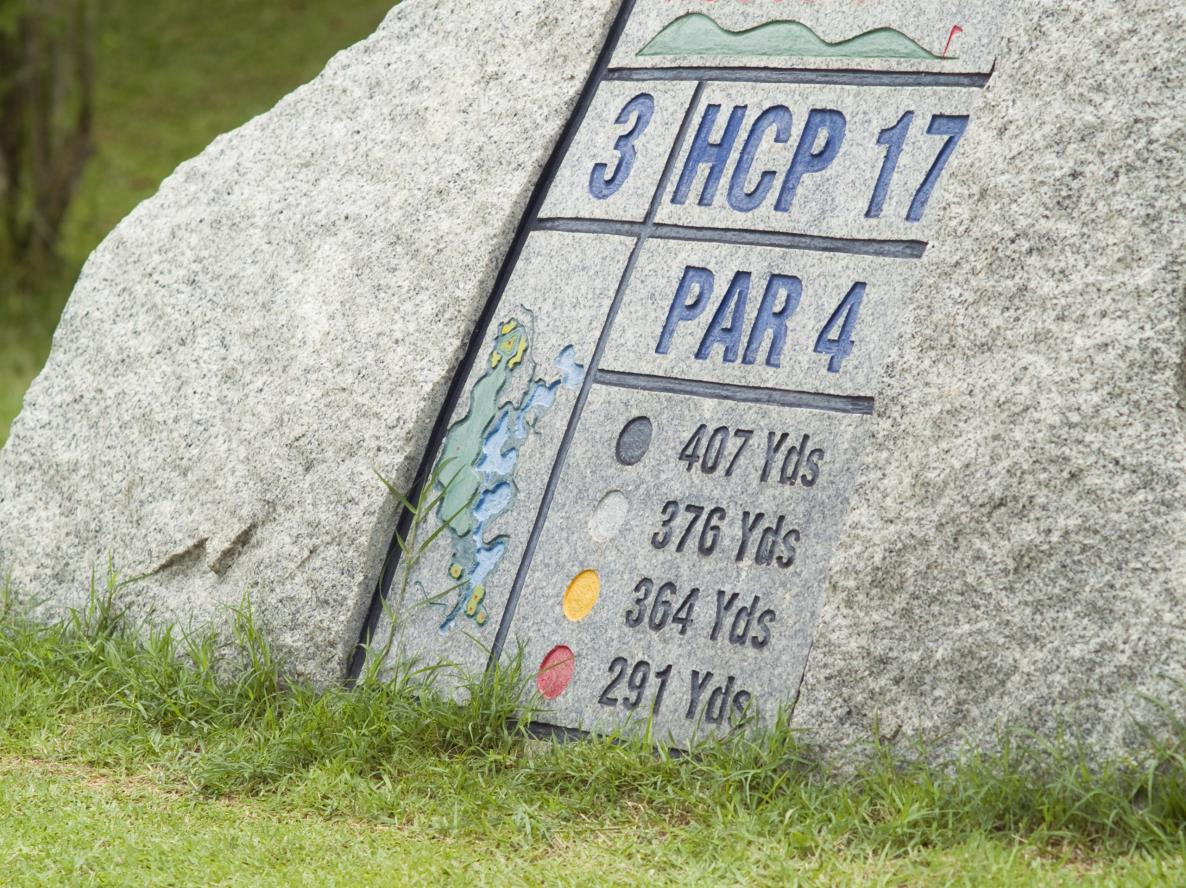
Entering the fairway, when it is allowed, at a point near where the first ball to be played lies, is generally correct.
Drivers and passengers in golf cars can switch roles for effective use.
When you exit the golf cart to play a shot, make a quick “guesstimate of what club you might want to use and pull that club and two others from your bag.
One extra would be a longer club, and the other a shorter club than your likely choice.
Then, send your car partner off to his or her ball location.
Now, if the wind or your mind changes, it's very likely you are properly equipped.
This golf car club selection technique is called “bracketing” and is sure to identify you as a respected golfer.
When you're done with your shot, move unobtrusively toward the car while your carmate plays. If you're infirmed or risk distracting someone, stay still, and your carmate will return for you. Good golf car etiquette, again, is all about anticipation and awareness of other players.

When it is time to putt, park the golf car between the green and the next tee, usually on a designated or signed area.
It is a pretty good bet that all courses ask you not to drive or park golf cars within 50 yards of the green.
There are exceptions, but few.
Golf cars have nearly made the caddie extinct. Some fine golfing venues continue the tradition.
If you want to appreciate the glory of golf, treat yourself to a round with a skilled caddie.
It’s golf at its best.
Here's another good one... It goes along with " be aware of everything" that is happening around you...but it's more specific.
When golfers play together, they watch the flight of each other’s shots.
Sometimes, the sun or topography will hide the eventual destination from the player, and a good companion, looking from another angle, will easily see it land.
When a shot is errant, say into woodlands or water, try and recall a specific landmark where it was last visible.
That narrows the search for it and saves time to boot. When you do it for your companions, they’ll do it for you.
Learning about stuff like equipment and fashion and country clubs versus muni courses and tee times and tournaments and handicaps and scorekeeping are the rules of golf that are all part of the enjoyable process.
Our friends here, need to know that those parts of golf change often change depending on society, culture, country, climate, and community.
It is the ready exchange of that information that is the basis for developing friendships in golf.
So, if what we shared here serves to relax and help someone new to golf, we have committed a fine act. Have fun like a kid again. Hit a ball on the ground with a stick. Play a great game on great playgrounds.




